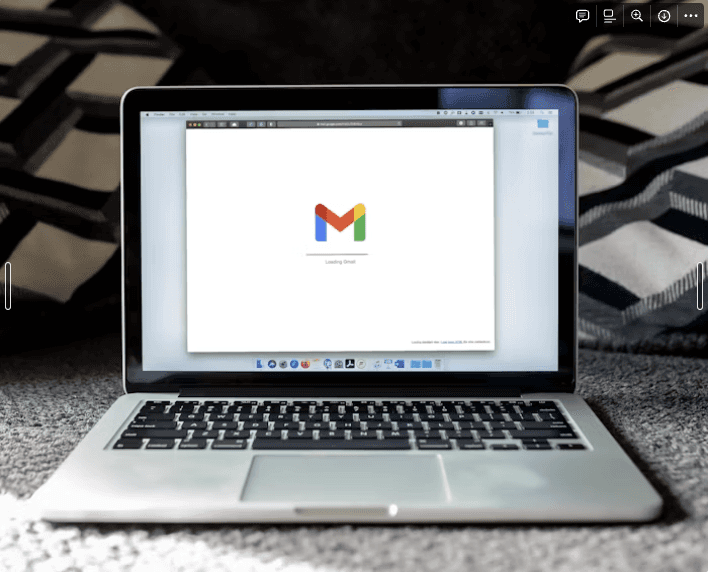How Gmail and Outlook Handle High-Volume Emails Differently: Key Strategies to send 100K+ Cold Email

Steve Baltodano
Jul 29, 2024
How Gmail and Outlook Handle High-Volume Emails Differently: Key Strategies to send 100K+ Cold Emails
Sending over 100K cold emails per month? Understanding how different platforms like Gmail and Outlook handle high-volume sends is crucial for maintaining deliverability. Both platforms approach spam filtering and email reputation uniquely, and with Gmail’s new Gemini AI update for October, these differences are about to grow even more distinct.
In this blog, we’ll break down exactly how Gmail and Outlook manage large email volumes, how to optimize your campaigns for each platform, and the specific steps you need to take to ensure your emails land in the inbox—not the spam folder.
Gmail vs. Outlook: The Game Changes for High-Volume Senders
Gmail: A New Era with Gemini AI (Coming October 15th)
Gmail has long relied on domain reputation and engagement metrics to filter spam, but with the upcoming Gemini AI update, the system is becoming more stringent. The update introduces AI-driven contextual analysis that doesn’t just measure domain reputation but also real-time engagement metrics such as open rates, click-through rates, and replies.
What’s Changing with Gemini AI?
Stronger Spam Filters: Gmail is tightening its filters to penalize domains that don’t meet high engagement standards.
Real-Time Engagement Analysis: Gmail will start analyzing user interactions like never before, prioritizing emails that receive opens, clicks, and replies.
Actionable Tips for Gmail’s Gemini AI:
1. Monitor Domain Reputation
Use Google Postmaster Tools to track domain health and set up alerts for any reputation changes.
2. Prioritize Engagement
Engage recipients with valuable content and calls to action to boost opens, clicks, and replies.
3. Ongoing Warm-Up
Even after initial warm-up, maintain domain health with tools like Warmy or Mailreach to avoid penalties.
4. AI-Optimized Content
Craft compelling subject lines and body content that encourages engagement, using tools like Persado for optimized messaging.
Outlook: Focus on IP Reputation and Infrastructure
While Gmail emphasizes domain reputation, Outlook prioritizes IP reputation. If you're sending 100K+ emails per month, ensuring your IP is healthy and properly warmed up is essential for reaching the inbox.
Key Outlook Considerations
IP Health: A healthy IP reputation is crucial for deliverability on Outlook.
Domain Age Filter: Domains less than six months old may face increased filtering, even if the IP reputation is solid.
Actionable Tips for Outlook’s Email System:
1. IP Warm-Up and Management
Use Microsoft SNDS to track IP health and reputation. Gradually increase email volume to warm up your IPs.
2. Split Sending Across IPs
Spread large email volumes across multiple IPs to reduce the chances of being flagged.
3. Manage Domain Age
For domains younger than six months, use aged domains or wait until the domain has matured before scaling up sending.
Beyond the Basics: Advanced Tips for Handling 500K+ Emails
When sending upwards of 500K emails per month, email deliverability becomes a matter of finely-tuned infrastructure and strategy.
Advanced Authentication
Ensure SPF, DKIM, and DMARC are in place. Consider adopting BIMI (Brand Indicators for Message Identification) to boost brand trust and deliverability rates on Gmail.
Granular List Segmentation
Segment your audience based on engagement and time zones to increase relevance and avoid mass rejections.
Reputation Feedback Loops
Set up feedback loops to track spam complaints and user interactions. Adjust your campaigns based on real-time feedback from tools like Google Postmaster and Microsoft SNDS.
Conclusion
When sending 100K+ cold emails per month, understanding how Gmail and Outlook handle deliverability is essential. With Gmail’s Gemini AI update, engagement metrics will play a pivotal role in email filtering, while Outlook will continue to focus on IP reputation. By customizing your strategy for each platform and ensuring continuous monitoring, you can keep your emails out of the spam folder and increase deliverability rates.
FAQs:
1. What is the Gmail Gemini AI update?
The Gemini AI update, launching on October 15th, introduces enhanced spam filters and real-time engagement analysis to Gmail's email system.
2. How does Outlook handle email deliverability for large sends?
Outlook prioritizes IP reputation, meaning the health of your sending IP is crucial to reaching inboxes.
3. Why is engagement important for Gmail email deliverability?
With the new Gemini AI update, Gmail will penalize domains that don’t drive positive engagement, such as opens, clicks, and replies.
4. How can I warm up my IP for Outlook?
You can use Microsoft SNDS to monitor IP reputation and gradually increase your email send volume to avoid being flagged as spam.
5. What are the key differences between Gmail and Outlook when handling high-volume emails?
Gmail focuses on domain reputation and engagement metrics, while Outlook prioritizes IP reputation and enforces strict rules for domains less than six months old.
Does your infraestructure need an update?
Cold emailing is an art and a science. Avoid the common mistakes, follow the best practices, and you’ll see your outreach results improve dramatically. But if you want to scale without the headaches of deliverability issues, you need a rock-solid infrastructure.
That's Where Mission Inbox Comes In.
At Mission Inbox, we believe in taking ownership of your deliverability. Shared IPs and generic setups are not going to cut it if you're serious about scaling your outreach. Here’s why our approach works:
Dedicated IPs for Better Control: Shared IPs are like shared pools—one bad swimmer can ruin it for everyone. With dedicated IPs, you’re in full control. No more “poop in the pool” scenarios where someone else's mistakes damage your sender reputation. If something goes wrong, it’s on you—but that’s a good thing. You control the narrative and can quickly fix any issues.
Real-Time Monitoring for Continuous Improvement: What gets measured gets managed. With our platform, you get real-time insights into every factor affecting your deliverability—IP reputation, domain health, sending volume, copy quality, and list hygiene. If something’s off, you’ll know before it becomes a problem. This proactive approach is what sets apart good email strategies from great ones.
Hands-On Support with Dedicated Managers: If you're a high-volume sender or an agency managing multiple clients, you need more than just tools. You need a partner. That’s why we offer supervised onboarding and dedicated deliverability managers who will work with you to set up, optimize, and scale your cold email campaigns. You’ll have an expert in your corner to ensure that every email counts.
Claim Your 21-Day Free Trial Now!
Join the ranks of top-performing sales teams who have already transformed their cold email game with Mission Inbox. Sign up for your 21-day free trial now and unlock the full potential of your outreach strategy. Visit Mission Inbox to get started. Make your emails count, dominate the inbox, and close more deals.
Convinced? Elevate Your Email Strategy!
Related posts
MissionInbox v3: Revolutionized Email Delivery Platform
We're proud to introduce MissionInbox v3, a complete platform rebuild that delivers unprecedented reliability, speed, and scalability for your email communications.

Steve Baltodano
Google’s October 15th Security Updates: How Gemini AI Will Transform Cold Emailing and Deliverability
Learn how Google’s October 15th security updates and Gemini AI will transform email filtering and cold emailing strategies. Stay ahead with personalized, value-driven content.

Tony Baltodano
Understanding Gmail Spam Alerts in 2024 – What They Mean and How to Solve Them
Decode Gmail spam alerts and learn how to fix them to improve your email deliverability. Discover solutions for common alerts like "Messages Marked as Spam" and prevent your emails from ending up in the spam folder.

Tony Baltodano



